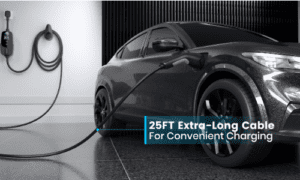In the rapidly evolving realm of autonomous vehicles, communication systems are driving revolutionary advancements that hold the promise of safer, more efficient transportation. These systems serve as the lifeblood of self-driving vehicles, allowing them to interact with each other, communicate with roadside infrastructure, and connect with the world at large.
This article delves into the latest developments in the field of autonomous vehicle communication networks, shedding light on the impactful work being carried out by experts like Sanath Javagal and its transformative implications for the future of mobility.
Autonomous vehicles, often considered technological marvels, are reshaping our perceptions of transportation. Yet, beneath their impressive capabilities, a complex web of communication systems plays a pivotal role in ensuring their safe and efficient operation. These systems enable self-driving vehicles to share real-time information, collaborate with one another, and interface with the surrounding environment, fundamentally changing the dynamics of modern mobility.
To provide insights into the cutting-edge work being conducted in this field, we sat down with Sanath Javagal, a trailblazing expert in autonomous vehicle communication systems. Mr. Javagal has been at the forefront of research and development in this domain and has shared his expertise on the three primary communication systems that are revolutionizing autonomous driving: V2V, V2I, and V2X.
V2V, or Vehicle-to-Vehicle communication, is a cornerstone of the autonomous driving revolution. It facilitates real-time data exchange among self-driving vehicles, including information about their locations, speeds, road conditions, and potential hazards. Experts like Sanath Javagal are leading collaborative efforts to ensure these vehicles can seamlessly communicate, enabling critical functions such as route optimization and accident prevention.
“V2V communication is transforming the landscape of autonomous driving,” Mr. Javagal remarked. “Our work is focused on creating a safer and more efficient driving environment where vehicles work together harmoniously.”
V2I, or Vehicle-to-Infrastructure communication, bridges the gap between autonomous vehicles and the infrastructure they depend on. This interconnected network encompasses traffic signals, road signs, and traffic management centers, which provide crucial data to vehicles while receiving updates about their status. Ongoing research and development efforts employ technologies like DSRC (Dedicated Short-Range Communication), C-V2X (Cellular Vehicle-to-Everything), and optical communication to enhance the V2I experience.
“Our dedication to the field ensures that V2I communication seamlessly integrates into the autonomous driving experience,” Mr. Javagal explained. “This work contributes to more effective traffic management and enhanced road safety.”
The most promising developments in V2X communication are those that expand the scope of autonomous vehicle interaction. V2X, or Vehicle-to-Everything communication, enables vehicles to gather real-time information not just from other vehicles but also from infrastructure, pedestrians, and cyclists. The integration of V2V and V2I communication technologies empowers autonomous vehicles to make informed decisions, avoiding potential hazards and ensuring safer roads.
“Our research in V2X communication ensures that autonomous vehicles are well-informed about their surroundings,” Mr. Javagal emphasized. “This comprehensive understanding of the environment contributes to enhanced road safety and reshapes the way we perceive transportation.”
The work being done in the field of autonomous vehicle communication is nothing short of revolutionary. As autonomous vehicle technology continues to evolve, these communication systems are set to play an increasingly pivotal role in shaping the future of transportation. V2V, V2I, and V2X communication are empowering autonomous vehicles to navigate roads safely and efficiently, ultimately improving traffic flow and reducing accidents.
“The implications of our work are transformative,” Mr. Javagal concluded. “We’re not just working with technology; we’re creating a safer, more efficient way of getting from one place to another.”
In the quest to revolutionize transportation, innovators like Sanath Javagal are leading the way. Their groundbreaking work in autonomous vehicle communication systems is poised to enhance the way we experience mobility, promising safer and more efficient roadways. As technology continues to advance, these communication systems hold the potential to bring us closer to a brighter and safer future on the roads.





























